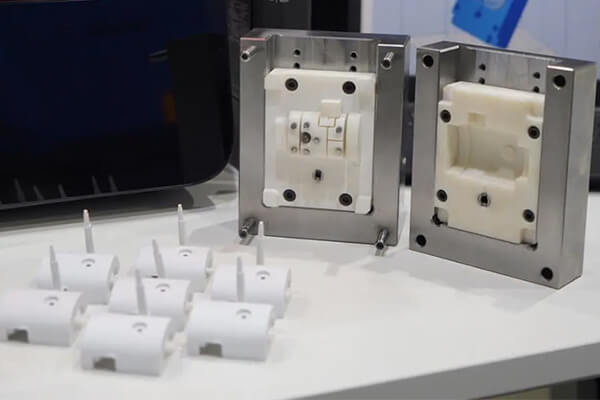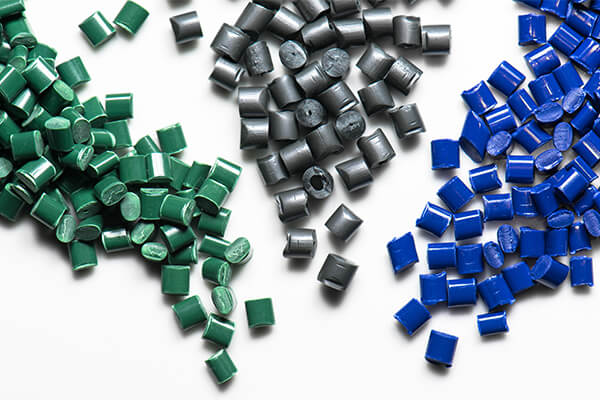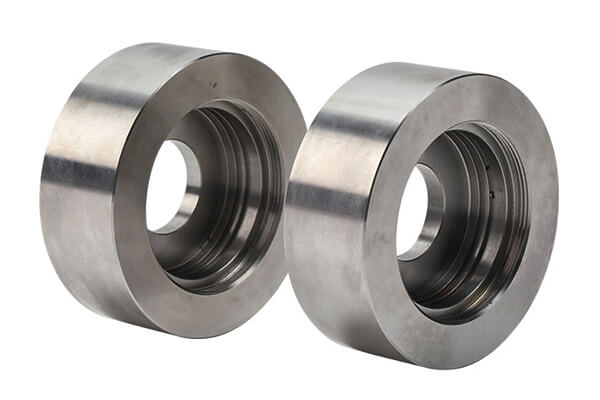Affordable Low-Cost Injection Molding

What is Injection Molding?
Injection molding is a widely used manufacturing process in which molten plastic material is injected under high pressure into a mold cavity. Once the plastic has cooled and solidified, the mold is opened to reveal the final product. This versatile technology can be used to produce a wide variety of plastic parts and products, from small complex components to large complex items. Injection molding is favored for its efficiency, precision and ability to create complex geometries. Due to its ability to mass-produce high-quality, cost-effective, and consistent plastic parts, it is used in a variety of industries, including automotive, electronics, medical devices, and consumer goods.

Is Injection Molding Cheap?
Certainly! Low-cost injection molding can indeed be cost-effective. However, it’s a nuanced answer because the pursuit of “cheap” injection molding can sometimes lead to more significant expenses in the long run.
Plastic injection molding is a complex manufacturing process that demands expertise at every stage to ensure top-notch results. Cutting corners at any point in the process can result in costly repercussions. Therefore, when seeking affordable injection molding solutions, it’s crucial to partner with a company that possesses the necessary experience and knowledge.
While everyone desires low-cost injection molding, it’s equally vital to avoid the pitfalls of subpar quality and compromised mold making that often accompany “cheap” options. Sungplastic, drawing from extensive experience and global manufacturing advantages, offers low-cost injection molding without compromising on quality.
How Costs are Estimated and Controlled for Low-Cost Injection Molding
Cost estimation and control in low-cost injection molding involve a thorough analysis of various factors throughout the production process. By estimating and controlling costs at each stage of the injection molding process, we can optimize production efficiency, reduce waste, and offer low-cost injection molding solutions without compromising on quality. Continuous monitoring and improvement are essential to achieving and maintaining cost-effectiveness in the long run. Here’s a breakdown of how costs are estimated and controlled for low-cost injection molding:
Material Costs:
- Estimation: Begin by selecting the appropriate plastic material for the project while considering cost-effectiveness. Accurate material quantity calculations are crucial.
- Control: Continuously monitor material usage, explore options for using recycled materials, and negotiate favorable material supply contracts.
Tooling and Mold Costs:
- Estimation: Calculate tooling and mold building costs based on design complexity, size, and desired production volume.
- Control: Optimize mold design to reduce material waste and production time. Regular maintenance prolongs mold life.
Labor Costs:
- Estimation: Calculate labor costs based on the time required for setup, operation, and maintenance of injection molding machines.
- Control: Invest in employee training to enhance efficiency and minimize downtime. Automation reduces labor costs in the long term.
Machine and Energy Costs:
- Estimation: Assess the energy requirements of the injection molding machines and their associated costs.
- Control: Invest in energy-efficient machines and optimize production processes to reduce energy consumption.
Quality Control and Scrap Costs:
- Estimation: Estimate costs associated with quality control measures and potential scrap or rework.
- Control: Implement stringent quality control processes to minimize waste and rework, thereby reducing costs.
Batch Production:
- Estimation: Evaluate batch sizes to determine optimal production quantities for cost-effectiveness.
- Control: Adjust production batch sizes as needed to maximize economies of scale and minimize production costs.
Supply Chain Optimization:
- Estimation: Analyze supply chain costs related to material procurement, transportation, and inventory management.
- Control: Optimize the supply chain by negotiating favorable contracts, seeking cost-effective suppliers, and streamlining logistics.
Cost Analysis:
- Estimation: Regularly analyze costs to identify areas for potential improvement.
- Control: Conduct periodic cost analyses to track the performance of cost-saving measures and make necessary adjustments.
How to Make Injection Molding Cheaper?
The answer is very simple. It starts with finding a company that can provide high quality parts while enabling low-cost injection molding manufacturing. Sungplastic achieves cost efficiency by selecting appropriate plastic raw materials, mold steel, and introducing injection molding automation. These methods provide us with complete control over a low-cost injection molding process, ensuring that every part manufactured is of exceptional quality.
Plastic Raw Material Prices Affect Costs
The price of plastic raw materials directly affects the cost of injection molding, because plastics are usually the main raw materials for low-cost injection molding manufacturing. The following are some common plastic raw materials and their relative prices:
- Polypropylene (PP): Polypropylene is a relatively inexpensive plastic used in the manufacture of a wide variety of plastic items such as plastic containers, pipes, household items, and more.
- Polyethylene (PE): Polyethylene is also less expensive and has a variety of uses, including plastic bags, bottles, plastic buckets, and more.
- Polyvinyl Chloride (PVC): Polyvinyl chloride is generally less expensive and is used to make pipes, cable insulation, window frames, and more.
- Polystyrene (PS): Polystyrene is affordable and used in the manufacture of disposable tableware, packaging materials, housings for electronics, and more.
- Polyethylene Terephthalate (PET): PET is affordable and used to make plastic bottles, fibers, clothing, etc.
- Polycarbonate (PC): Polycarbonate is relatively expensive, but it has high strength and heat resistance, making it suitable for automotive parts, eyeglass lenses, and more.
- Polyamide (PA, Nylon): Polyamide is relatively expensive and is used to make high-strength parts, ropes, gears, etc.
- Polytetrafluoroethylene (PTFE, Teflon): Polytetrafluoroethylene is more expensive and is often used in the manufacture of seals, lubricants, etc. due to its excellent corrosion resistance and high temperature resistance.
Mold Steel Affects Cost
Mold steel is a critical component of injection molds and has a direct impact on cost and production quality. Here are some common mold steel materials and their relative prices:
- P20 Steel: P20 steel is a general-purpose mold steel with a relatively low price and is suitable for molds for manufacturing small and medium-sized plastic parts.
- 420 Steel: 420 steel is cheaper and is often used to make low-cost injection molds, such as molds for household products.
- S136 Steel: S136 steel is affordable and widely used in the manufacture of molds for transparent plastic products such as lenses and optical lenses.
- NAK80 Steel: NAK80 steel is affordable and suitable for manufacturing molds that require high surface quality and precision.
- H13 Steel: H13 steel is relatively expensive, but its hardness remains stable under high temperature conditions and is suitable for manufacturing high temperature resistant molds.
- 718 Steel: 718 steel is more expensive, but it has excellent hardness and wear resistance and is suitable for manufacturing high-precision and high-demand molds.
The choice of mold steel depends on the characteristics of the desired product, the life of the mold and production requirements. High-quality tool steel is more expensive, but it can provide longer service life and better forming quality, which can reduce production costs in the long run and meet the needs of low-cost injection molding. During the mold design phase, manufacturers need to carefully weigh material selection to balance cost and performance.
Injection Molding Automation Affect Costs
Injection molding automation significantly impacts costs in several ways:
- Labor Costs Reduction: Automation reduces the need for manual labor, minimizing wages and overhead expenses.
- Consistency and Quality: Automated systems ensure consistent production, minimizing defects and the associated costs of rework and scrap.
- Higher Efficiency: Automated machines operate continuously with minimal downtime, increasing production rates and overall efficiency.
- Reduced Cycle Times: Automation can lead to shorter cycle times, enabling faster production and reducing energy consumption.
- Minimized Errors: Automation reduces human errors that could lead to defective parts or machine malfunctions.
- Energy Savings: Efficient automation systems are designed to reduce energy consumption, resulting in lower operational costs.
However, initial investment costs for setting up automated systems and training personnel can be significant. Therefore, a careful analysis of the production volume, part complexity, and expected long-term benefits should be conducted to determine the feasibility of automation in reducing overall costs in injection molding operations and meeting the needs of low-cost injection molding.
Affordable Injection Molding Services –Sungplastic
Injection molding is a complex manufacturing process that requires multiple steps and expertise to ensure each step is performed accurately. In a fiercely competitive market, low-cost injection molding manufacturing has also become a factor that manufacturers need to consider. Low-cost injection molding is the key to maintaining competitiveness and is crucial to the long-term development of enterprises. However, cutting corners anywhere can have costly consequences. Therefore, when looking for an affordable injection molding solution, it is crucial to choose an experienced and skilled company. Sungplastic is an injection molding manufacturer with extensive experience, and we are able to provide low-cost injection molding services without sacrificing quality. Welcome to contact our professional team to discuss your next project and learn more about our affordable injection molding solutions.
About Sungplastic
Sungplastic is a plastic product manufacturer with rich experience in injection molding. According to the different product development requirements, we flexibly adjust the manufacturing process to achieve high quality, high efficiency and more economical.
We offer a variety of manufacturing services: Rapid Prototyping, Tool Making, Injection Molding, Product Design and Development, CNC Machining and Metal Stamping. You can choose from a variety of plastics, silicone rubber, or metal for your product. Regardless of mass production or small batch customization, Sungplastic has always been committed to providing assured, efficient and more economical one-stop processing services for your projects.
Contact us for a free quote and project review.
Get a free quote and design analysis today.
We’ll reply you within 6 working hours. We respect your privacy.



